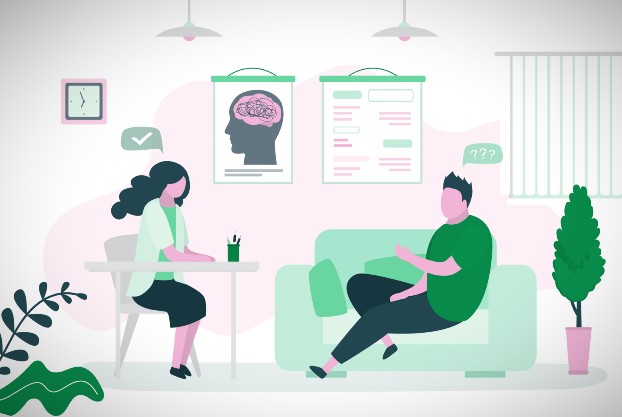
Cluster headaches are often accompanied by eye-watering, nasal congestion, and swelling around the eye. These symptoms occur when a person has recurrent headaches on one side of the head. Attacks can occur for weeks or months.The exact cause of the condition is unknown. Some individuals have a family history of the illness. Exposure to certain chemicals can trigger attacks.
Management includes lifestyle changes, avoiding potential triggers, and decreasing the frequency of attacks.
Cluster headaches are very rare and affect only a small number of people in their lifetime. They occur when groups of headaches occur together.
Signs and symptoms
Cluster headaches are often accompanied by severe unilateral headache attacks. The duration of these attacks is usually around 15 to 180 minutes. Most women experience them for less than 60 minutes.
The onset of a migraine is usually rapid and without aura. Pain in the general area of attack may indicate an imminent CH, or it may linger after an attack has already passed.
Pain
Cluster headaches are most commonly caused by pain around the eye. It is considered one of the most painful headache conditions. As a result, some individuals with cluster headaches experience thoughts of suicide.
Other symptoms
Cluster headache is a type of headache that can be distinguished by its various symptoms: unilateral orbital pain, severe unilateral orbital pain, and temporal pain. It is usually accompanied by at least one of these autonomic symptoms.
Restlessness may occur with increasing frequency. It can lead to physical exhaustion, confusion, and aggressiveness.
People with CH may also feel anxious and depressed when they encounter a headache. They may avoid making plans or engaging in social activities due to the unpredictable nature of their pain schedule.
Recurrence
Cluster headaches may be referred to as alarm clock headaches due to their regularity. The frequency of these attacks can be unpredictable, with some attacks appearing once or more daily.
Cluster headaches that occur in two or more clusters can be classified as episodic. If they occur for more than a year and do not show complete remission, they can be classified as chronic.
Causes
It is unknown the cause of cluster headache. The headache was previously described as a type of vascular headache and has been associated with the dilation of blood vessels in the brain. Other mechanisms are being considered.
Genetics
Cluster headaches have been associated with the dilation of blood vessels in the brain. The theory that these headaches are caused by pressure on the trigeminal nerve has been called into question.
Some of the genes that are thought to play roles in the development of amyloid beta-1 are the beta-protein beta 3, the hypocretin/orexin receptor type 2, and the G protein beta 3.
Tobacco smoking
About 65% of people with CH are tobacco smokers. Stopping smoking does not improve the condition and it is unlikely that smoking is a cause. People with CH may be prone to certain lifestyle changes.
Hypothalamus
The hypothalamus is the major biological clock that controls the body’s circadian rhythm. Cluster headaches can occur when the brain’s clock is turned off.
PET scans show that certain brain regions are activated during pain, while the other areas are not activated during pain. These differences are referred to as the “pain matrix” and are computed using voxel-based morphometry (VBM).
Diagnosis
A detailed history of headaches helps incorrect diagnosis, as there is no confirmatory test for CH. A headache diary can be used to track the frequency, duration, and severity of headache attacks. It also helps in distinguishing headache type and pain intensity.
The first CH attack can present with a variety of problems, such as confusion regarding the diagnosis of complex chronic diseases. It is important that staff is trained to spot headache types.
Due to the nature of CH, many individuals experience a diagnostic delay before their headaches are properly diagnosed. This is especially true for people with certain conditions. Repeatedly referred to various specialists for evaluation and treatment may lead to unnecessary treatment.
Differential
Other headache types can also be mistaken for migraine and may mimic the condition. In most cases, the term “cluster headache” is often used to refer to a different type of headache. This confusion leads to unnecessary diagnostic delays and can delay appropriate treatment.
Paroxysmal Hemicrania is a non-specific headache condition that can be caused by the male predominance of headache in CH. It is characterized by short but intense episodes of pain that are usually accompanied by a reduction in the number of headache episodes. CPH responds “absolutely” after receiving indomethacin.
CPH is a unilateral headache with no male predominance that can be treated with indomethacin. It may also be episodic and has shorter episodes of pain than cluster headaches. CPH responds “absolutely” to indomethacin.
It is a short-lasting unilateral headache with contusion and tearing. It is usually associated with the group of TACs.
Prevention
The management of cluster headache is done in three different categories: abortive treatment, transitional treatment, and preventive.
Verapamil
Verapamil is a calcium channel blocker that was previously used in people with cluster headaches. Improvement can be seen in both episodic and chronic CH when taking a daily dosage of 160 to 720 mg.
Glucocorticoids
There is little evidence to support the long-term benefit of glucocorticoids, but they can be used until other medications have taken effect. They are usually discontinued after 8–10 days.
Surgery
Several surgical procedures, such as microvascular decompression and rhizotomy, may be considered. However, they are not supported by evidence and there are cases of people who develop symptoms after these procedures.








